If you’re new to betting on horse racing, then keep scrolling! We break down how you can start betting on the ponies, as well as how to maximize your winning potential on all your wagers. Be sure also to check out the best horse racing betting sites and the latest horse racing odds! Let’s hop in the saddle and get out of the gates running as we begin our horse race betting journey.
Horse Betting Explained
Unlike casino betting, where bets are placed against “the house,” horse racing wagers are based on the pari-mutuel system, which means that each bet is placed in an individual pool that the winners share. In this sense, bettors are really betting against one another. The host track makes money by extracting a percentage of the pool known as the “takeout,” with the winning bettors sharing the remainder.
Jump to:
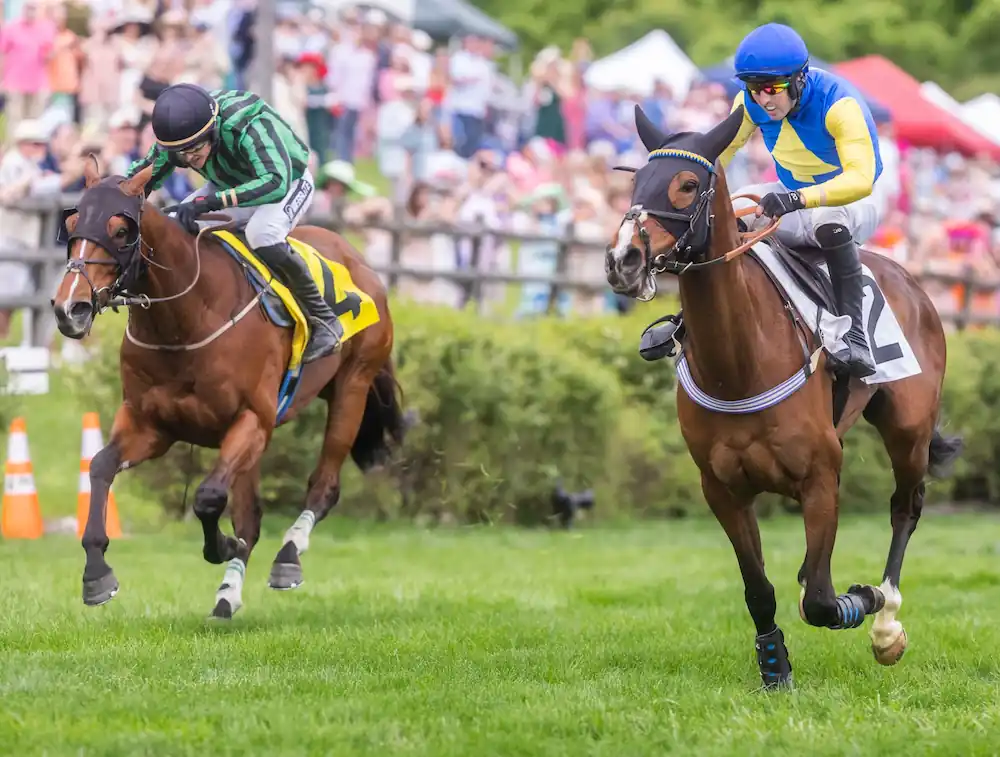
How to Bet on Horse Racing in Canada
To get started betting on horses in Canada, we’ve provided a simple step-by-step guide that’ll have you ready to bet on horse racing in no time:
- Choose a sportsbook: Find the best horse race betting site that fits your needs. Key factors to consider include the betting options available, bet value, customer support options, and payment methods offered.
- Create an account: Click “Join” to create an account. You will need to provide your personal information in order to open your account, verify your identity, and confirm that you’re eligible to bet on horse racing.
- Make a deposit: Transfer funds into your new betting account. Your deposit will fund the bets you make. Be sure to check out the deposit methods offered by your sportsbook to find the payment option that suits you best.
- Place a bet: Navigate to the horse race betting markets section of your sportsbook, find the odds/lines that look attractive to you, and lock in your first wager on any of the upcoming races.
Click here for a detailed breakdown on how to read horse racing odds, and keep scrolling for an explanation of the type of bets you can make!
Horse Racing Bets Explained
Let’s talk about the specific horse racing bets you can make and sprinkle in some strategy along the way.
1. Straight Bets
The easiest and most common bet we’ll explore is “straight bets.” Horse racing straight bets are wagers on a specific outcome that usually involve betting on only one horse. The three main straight bet types are win, place, and show.
🏇🥇 Win Bets
When you make a win bet, you’re wagering on a horse to win the race. That means the horse must finish in first place. If the horse doesn’t finish in the winner’s circle, you lose. This bet type is great for new bettors as it’s easy to place and understand, as well as delivers solid payouts if your pick wins. One downside, however, is that they’re the most challenging to win of all straight bets, as there’s no wiggle room in your wager, unlike the next two bets.
🏇🥈 Place Bets
A place bet is picking a horse to finish in second place or better. If the horse finishes in third place or lower, the bet loses. Place bets are attractive for bettors placing a straight wager as they give you some insurance on your wager without sacrificing too much of your bet’s value. For instance, if you aren’t 100% convinced that your horse has the speed to win the race outright, but still has the ability to cross the finish line among the top of the group, a place bet can be a great wager for you.
🏇🥉 Show Bets
A show bet cashes if the horse finishes third or better. Working the same as a place bet, a show bet provides you with even more bet insurance for an additional decrease in value. Compared to betting a win bet, a show bet is far easier to hit and provides a good opportunity for you to wager on multiple horses, which will give you the potential to win on more than one horse.
2. Multi-Race Bets
Multi-race wagers are when you bet on the winner of multiple races; if all your picks are correct, you could land yourself a considerable payday as a result. For example, if you pick the winners of two consecutive races, congratulations, you’ve just nailed the Daily Double. There’s also a Pick 3, Pick 4, Pick 5, etc. Due to the challenging nature of this bet type, it can be difficult to successfully win multi-race bets, but the payout can be far greater than placing a straight bet, and it costs you less for your stake.
Unlike sports betting, where you CAN’T pick multiple outcomes in a single event on a parlay, with multi-race bets, you can. That said, the more horses you add for each race, the more your ticket will cost. While this strategy can increase your chances of winning, it also increases your overall risk if it ends up busting.
3. Exotic Bets
Now it’s time to get into the truly unique and incredibly juicy horse racing bet types: exotic bets. Exotic bets are single-race wagers where you’re picking horses to finish in a certain order. These bet types work in the same way as a same-game parlay in traditional sports betting, as it allows you to add multiple picks from a single event, but you need to hit on each pick in order to win your bet.
Quinella Bet 1️⃣&2️⃣
The quinella bet is fairly simple. You’ll need to select two horses to finish in the top two spots of a race. These two horses can finish in any order as long as they finish in first and second place.
Exacta Bet 🥇🏇🥈🏇
Unlike a quinella bet, an exacta bet requires you to pick the top two horses in a race in the exact order (put the exact in exacta). If you selected the #7 horse to win (1st place) and the #8 horse to place (2nd place), the horses have to finish in that exact order in order for you to win your bet. If they end up in any other order, that bet becomes a loser.
There’s a caveat to that, though. You can box horses, which means that you can place a wager for every possible outcome between your picks. So, if you think the #7 horse is the most likely winner, but the #8 could give that #7 horse some stiff competition, you can bet both the #7 and the #8 to finish in first and both the #7 and the #8 to finish second. As long as they finish in the top two, your exacta wins. If they don’t finish in the top two, your bet loses. Keep in mind that when you start to “box horses,” your wagers will cost more to make. The same rules apply to the other exotic bets below.
Trifecta Bet 🥇🏇🥈🏇🥉🏇
A trifecta is a bet where you wager on the top three horses in the race to finish in the exact order. This is a chance to flex your horse racing betting skills as you predict the exact order of finish for win, place, and show within a race.
Another way to place a trifecta bet is to box it. For example, if you placed a trifecta on horses 1, 2, and 3 to finish in the top three of their race, you’d have to place six separate bets for each potential outcome. While the box method does increase your total stake, it can provide you with a better chance of winning your trifecta bet.
Superfecta Bet 🥇🏇🥈🏇🥉🏇4️⃣🏇
A superfecta bet requires you to pick the top four horses in the race in the correct order. Working the same way as a trifecta, but increasing both the difficulty of the bet as well as your potential payout, a superfecta requires you to go 4-for-4 in the exact order you selected. You can also box your Superfecta bets, but it will cost you even more as you’ll need to place a stake for every possible outcome.
Horse Racing Bet Slip Example
RACETRACK BET SLIP
Date: 2025-05-13 Race: 3 Bet Type: WIN Amount: $2.00 Horse #: 7
TOTAL: $2.00 Thank you for betting at Woodbine! Check your ticket before leaving the window.
How to Read it:
- Race: The number of the race you’re betting on.
- Bet Type: WIN (means your horse must finish first; other options could be PLACE or SHOW).
- Amount: The amount wagered (minimum is $2).
- Horse #: The number of the horse you’ve chosen.
This is a typical format for a straight bet, but slips for exotic bets (like exacta, trifecta, Pick 3, etc.) will list multiple horses and races as needed.
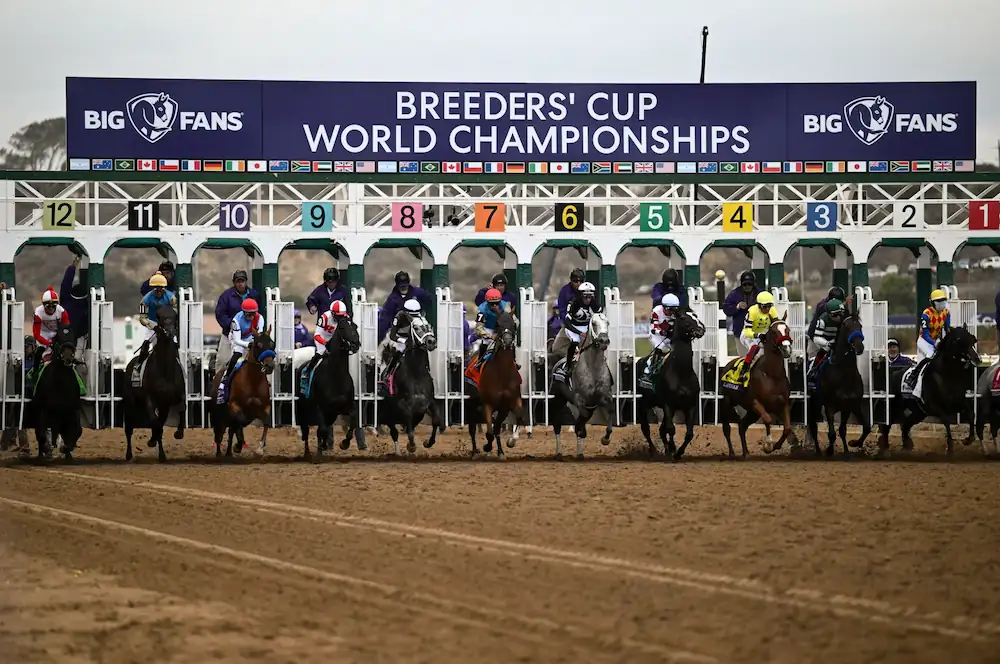
Horse Betting Lingo Explained 💬
When you’re betting on horse racing, there’s plenty of slang/lingo that may be new to your ears. We want to help bolster your betting vocabulary by shedding some light on some of the most common phrases in horse betting so you can better understand how to evaluate your horse racing bets and place more competent wagers while betting on horses.
1. Furlong
A furlong is a measure of distance in horse racing. One furlong equals one-eighth of a mile, or about 220 yards (roughly 200 meters). In horse racing, especially in places like the US and UK, you’ll often hear races described in furlongs, like a six-furlong sprint or an eight-furlong (which is the same as a mile) race. It’s a bit of a tradition in the sport, even though most other sports and countries now use the metric system. So, when you hear “furlong,” just think of it as a classic horse racing way to talk about distance!
2. Class Assessment
Horse races in North America are divided into classes. All horses usually start in maiden races. Once they “break their maiden” by winning a race, they’ll either be put into a claiming race for lower caliber horses, an allowance race to see how they stacked up against decent horses, or if the owners are confident, they’ll run the horse in a stakes race where the cream of the crop equine specimens duke it out for the big bucks. Graded stakes races range from grade 3 to grade 1, with grade 1 being the most prestigious (like the Kentucky Derby).
Most of that depends on the horse’s pedigree (defined below), the trainer’s plan for the horse, and what the condition books look like at the places the horse’s ownership group wants to race them. If there’s a horse that’s jumping up in class or moving down, there could be good betting opportunities, especially if the trainer is looking to get the horse an easy win so they can qualify for better-paying races. There are also times when a trainer will throw a graded stakes-winning horse in an allowance race to get a run after a long layoff. Those horses usually get overbet and very rarely finish well.
If possible, try to determine why a particular horse is in a specific race by gathering background information before the event.
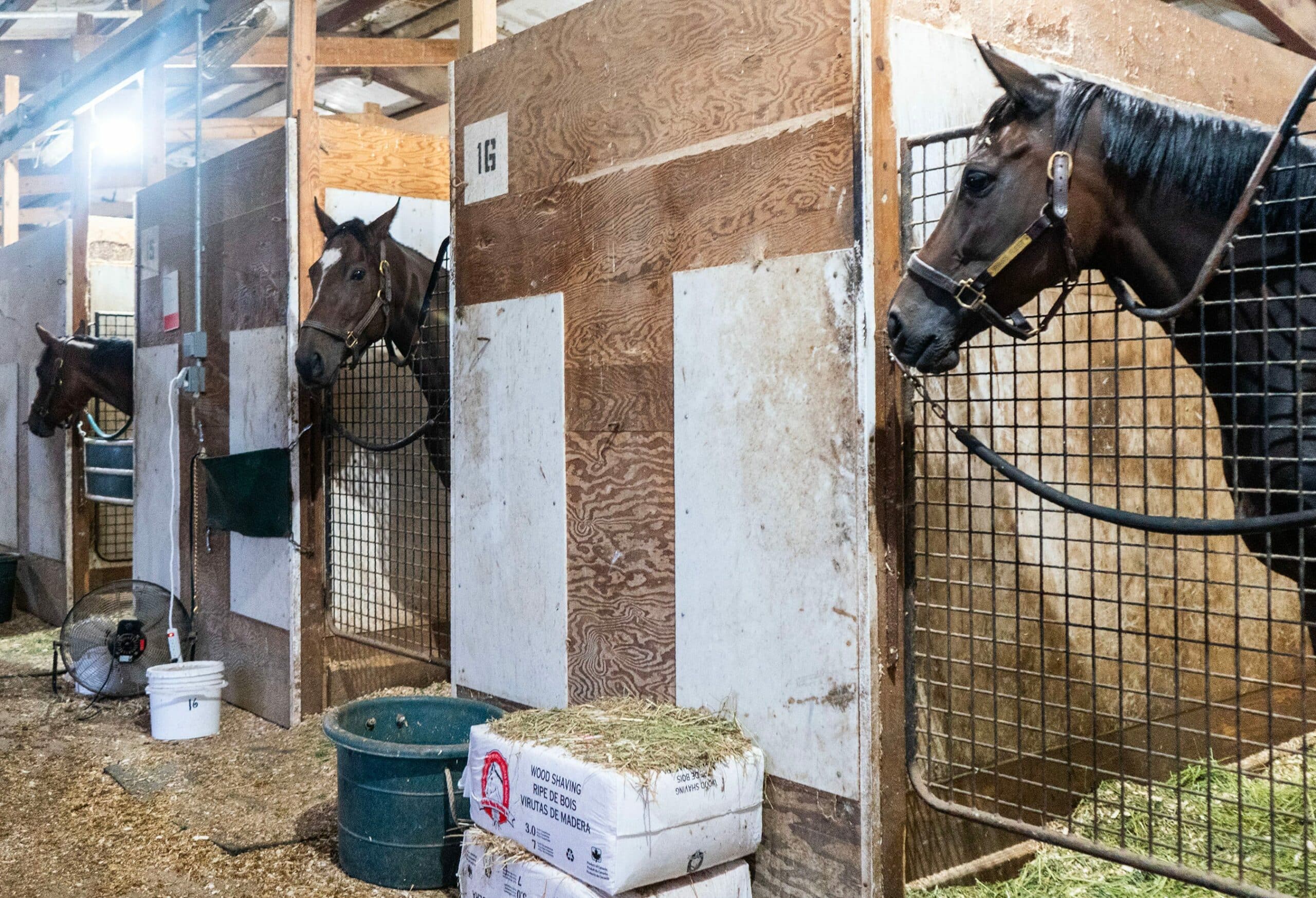
3. Pedigree
Pedigree essentially refers to the quality of a horse’s genes, based on its parents and overall genetic lineage. A horse with direct relatives who were successful racers has a strong pedigree. When you’re betting on maiden races specifically, handicapping based on pedigree can be a useful tool when trying to gauge how well a horse will run, especially if it’s the horse’s first-ever race.
For example, if the horse’s sire (father) and dam (mother) were both six-furlong (less than a mile) turf specialists, and the horse is racing a mile and a sixteenth on the dirt, odds are that the horse might not have the stamina to finish the race “on the board.” That said, if the horse’s next race is on the turf going seven furlongs, that thoroughbred might be a true win contender.
4. The Connections
When you’re at the track, you might hear the in-house analyst say something like, “I love the connections on this horse.” Essentially, what they mean is they love the horse’s trainer, jockey, and owner combo. Every track, and by virtue, every circuit has its own top combo.
Regardless of the race or the track, any horse with reputable names attached to them in the program will get “respect in the betting.” If you know what you’re doing, you can find good opportunities to bet against those connections in wide-open stakes races. The same goes for any top combo at any track and/or circuit.
5. Beyer Speed Figures
Beyer Speed Figures is a way of measuring and rating the performance of thoroughbred horses. The rating is formulated by looking at the final time and distance of their previous race and adjusting for the track variant. For reference, top stakes horses typically earn figures in the 100s, with the very best reaching the 120s. Bottom-level claimers at small tracks can average as low as 57.
This rating can be a great way to help bettors evaluate the upside and ability of a horse within a race, comparing them directly to other horses and their ratings. While horses can and do improve upon their previous speed figures on race day, a horse who shows a career-best Beyer Speed Figure in the ’80s or low-90s is likely too slow to seriously be considered for a winning bet.d Figure in the ’80s or low-90s is likely too slow to seriously be considered for a winning bet.
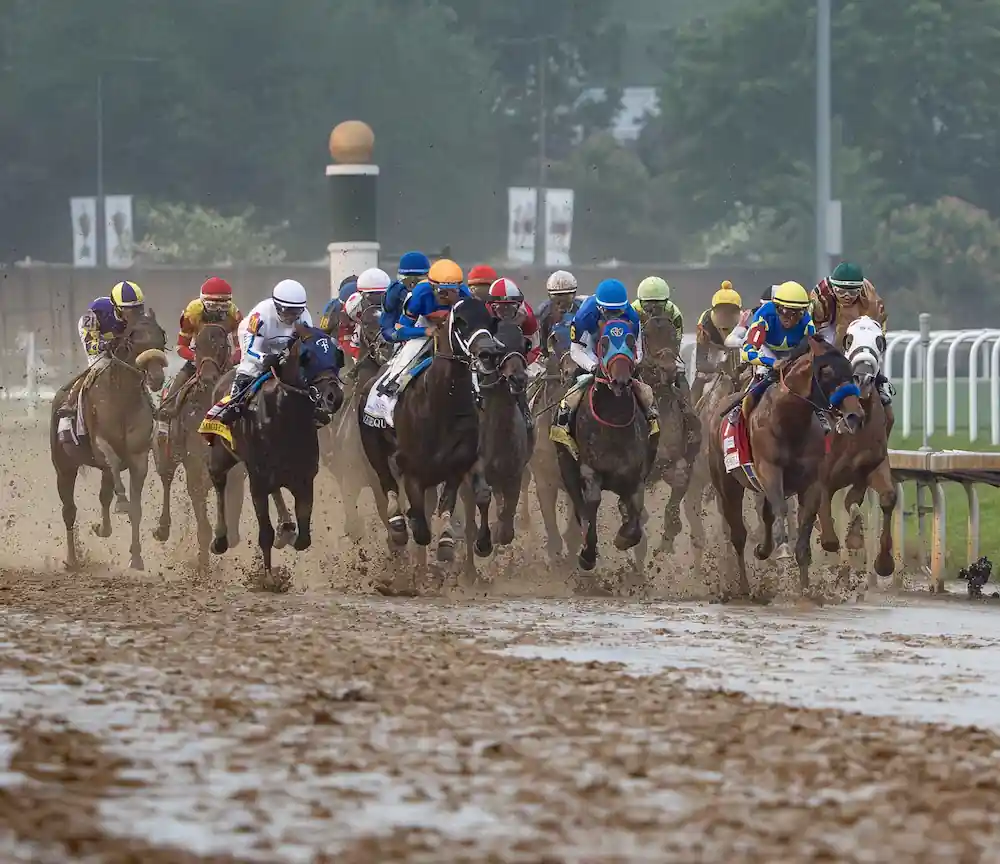
Tips for Horse Betting
In order to gain a winning edge over the oddsmakers, take each of our tips for horse betting into account so you can place yourself in the winner’s circle come the conclusion of the next race.
🤓 Do Your Research
Like any bet placed on sports, doing your research is imperative to your wager’s success. If you are betting on a prayer by backing the horse rocking your lucky number or picking the horse with the coolest name, your odds of winning are drastically lowered. Instead, do your homework and try to get some background information on the horses running, check out their pedigree, see their recent events, best times, and other factors that would directly contribute to whether they’d be a smart bet to make or not.
🧪 Experiment with Different Bet Types
A great way to expand your online horse racing betting repertoire is to experiment with different bet types. While betting only win, place, and show bets may be simple, the winning ability is limited and the stakes can add up over time. Expanding your range by placing exotics mixed in with your straights not only keeps things fresh and fun but can also help you harness your ability to bet on horses.
✋ Set Betting Limits
Lastly, be sure to set betting limits and stick to them. With any form of gambling, there are inherent risks involved, so bettors must take extra caution before placing wagers. Setting betting limits, such as deposit limits, time limits, or even self-exclusions through online betting sites, is a great way to keep your betting experience safe and fun.
Bet on Horse Racing at These Major Events
There’s no shortage of thrilling horse racing events to place bets on. Below, we’ve highlighted some of the biggest events of the year for you to get involved in and take the excitement to the next level.
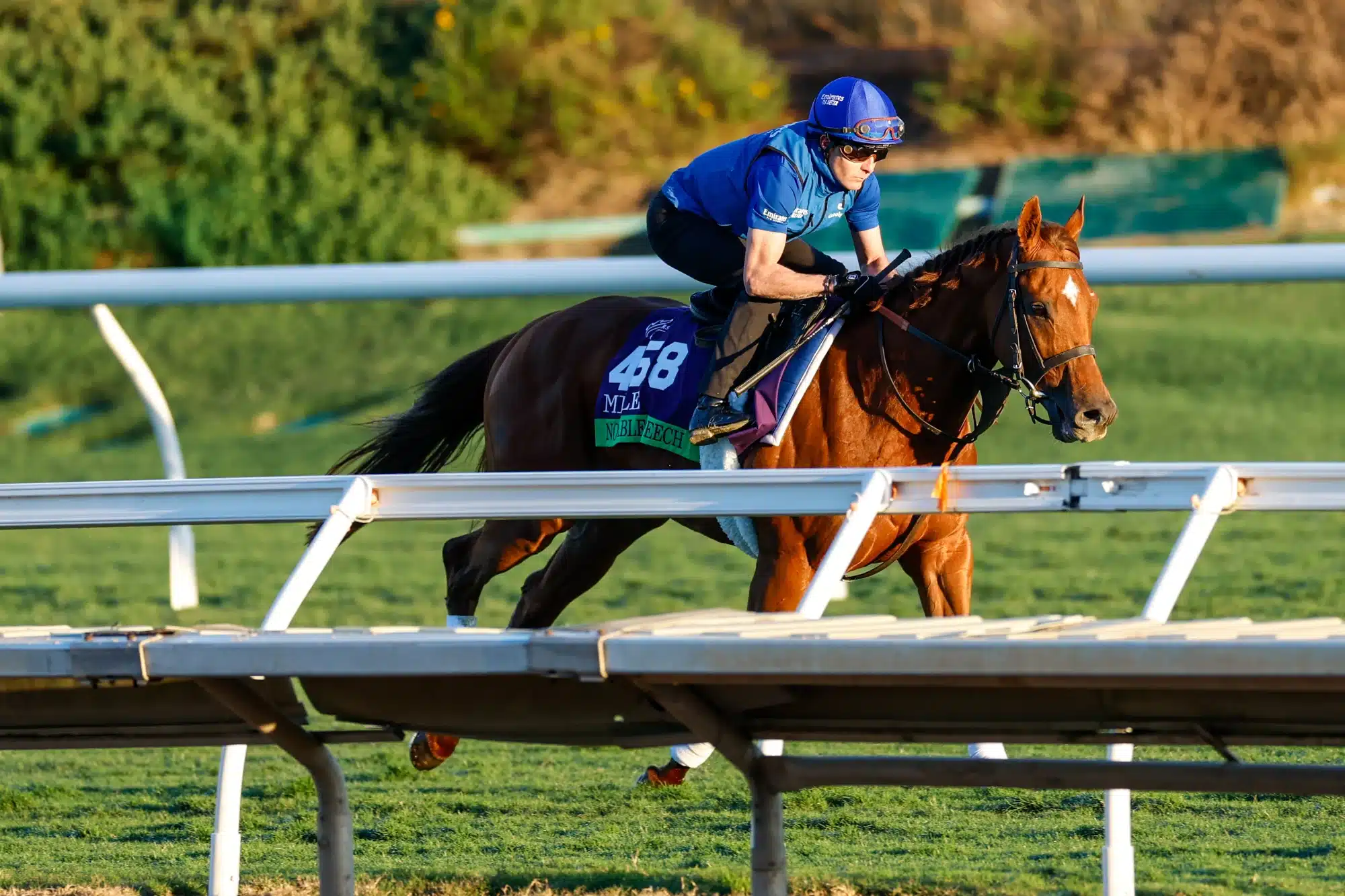
🦅 American Triple Crown
While betting on an individual event is a thrill in itself, placing a horse racing futures bet on a competitor to win the Triple Crown is a huge wager. Whether you’re betting on a horse to win the American or Canadian Triple Crown, this can be an extremely profitable bet to make if you’re able to predict the winner, but trends aren’t in your favour. Only 13 horses have ever won the American Triple Crown, seven for the Canadian Triple Crown, meaning it’s a short, illustrious, and exclusive group to join, and it’s rare to see any horse earn their way there.
👒 Kentucky Derby
The first Saturday of May is always marked on every horse racing fan’s calendar. That’s when the best three-year-old fillies in all of the land head on down to Louisville, Kentucky, to compete in arguably the biggest race the sport has to offer: the Kentucky Derby at Churchill Downs. It also serves as the first jewel in America’s coveted Triple Crown. Some of horse racing’s most celebrated equine legends have captured the roses. Not to mention the hearts and minds of racing fans worldwide.
🥇 Preakness Stakes
The Preakness Stakes is the second jewel of America’s Triple Crown. It’s held at the Pimlico Race Course in Baltimore, Maryland, on Armed Forces Day, which is usually the third Saturday of May. The Preakness is run at a distance of 1 3/16 miles. Everyone watches to see if the winner of the Kentucky Derby keeps hope alive for a Triple Crown win with a victory in this race.
🏆 Belmont Stakes
The Belmont Stakes is the final jewel in horse racing’s illustrious Triple Crown. The race historically takes place at Belmont Park in Elmont, New York, in June, but in the last two years, the race has taken place at Saratoga Race Course. As “The Belmont” is the final step to capture racing immortality for Triple Crown hopefuls, it has been labelled as the true “test of champions.”
💰 Breeders’ Cup Classic
The Breeders’ Cup Classic is an annual Grade I stakes American race for thoroughbred horses, typically held in November. The race was first run in 1984 and has become one of the most prestigious horse racing events in the world. The Breeders’ Cup Classic features a purse of several million dollars and is open to horses three years of age and older. The Classic comprises the fourth and final leg of horse racing’s Grand Slam (along with the Kentucky Derby, Preakness Stakes, and Belmont Stakes), which only one thoroughbred, American Pharaoh in 2015, won.
🍁 Canadian Triple Crown
Similar to the American Triple Crown, a horse must win all three events to win the illustrious title.
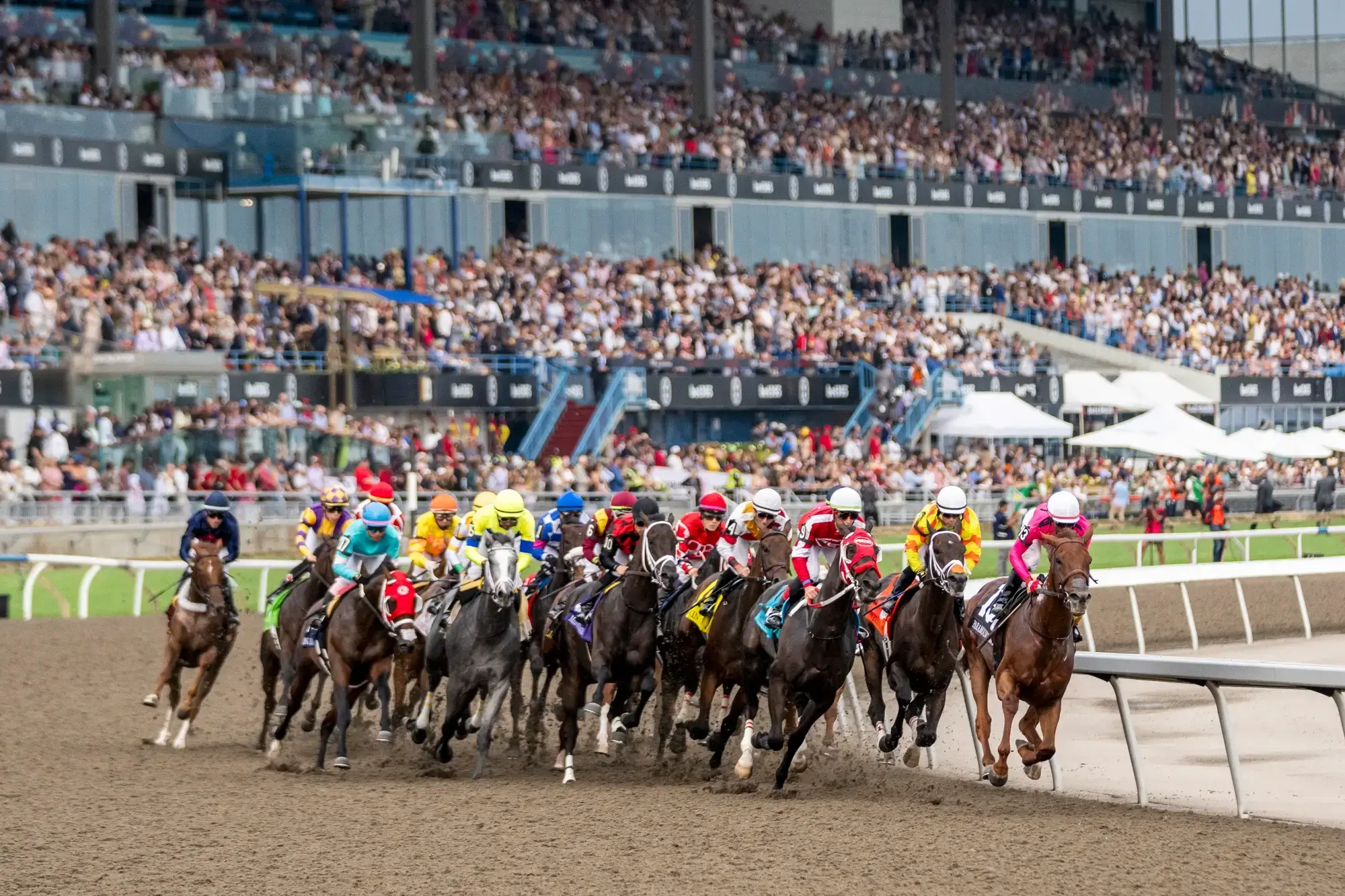
👑 King’s Plate
The King’s Plate takes place at Woodbine Racetrack in the heart of Toronto, Ontario, during the month of August. Billed as the most prestigious race in Canada and the start of the legendary Canadian Triple Crown, the best Canadian-bred three-year-olds of the crop compete to etch their names in the history books, not to mention capturing their share of the $1 million purse. The King’s Plate, formerly known as The Queen’s Plate, is Canada’s oldest stakes race. Meant to honour the reigning monarch, the majestic stakes race has taken on a legacy of its own.
👑 Prince of Wales Stakes
The Prince of Wales Stakes takes place at Fort Erie Race Track in beautiful Fort Erie, Ontario. Often billed as the “second boss” of the Canadian Triple Crown, three-year-old horses of both sexes duke it out to be one step closer to immortality. The race is run at 1 3/16 miles on a dirt track.
🏆 Breeders’ Stakes
The final jewel of the Canadian Triple Crown, the Breeders’ Stakes, is a daunting track that requires the winner to be of fine pedigree. Unlike America’s final leg of the Triple Crown, the Breeders’ Stakes is also run on the turf at Woodbine Race Track in Toronto, Ontario. Not only is the race run on the turf, but it’s a long-distance one to boot. A 1 1/2-mile turf course will separate the pretenders from the real deals.
Recap: How to Bet on Horse Racing Canada
If you’ve gotten this far, it’s safe to say you’re ready to get off to the races! Bookmark this guide as a reference for placing your bets and as a dictionary for the lingo you hear at the track! Be sure to check out the latest horse racing odds from the top online sportsbooks and secure your spot in the winner’s circle today.
More Horse Racing Resources:
- Best Horse Racing Betting Sites
- Latest Horse Racing Odds
- Woodbine Betting
- Horse Race Betting in Ontario
Major Horse Racing Events to Bet On
- Triple Crown
- Kentucky Derby
- Preakness Stakes
- Belmont Stakes
- King’s Plate
- Prince of Wales Stakes
- Breeders’ Stakes
- Breeders Cup
How to Bet on Horse Racing FAQs
Yes, you can bet on horse racing in Canada! Many Canadian sportsbooks offer horse racing odds. Check out our step-by-step guide above on how to bet on horse races in Canada and learn how you can start placing bets on the racetrack today.
There is no single “best” way to bet on horse racing; it’s all about finding the best betting strategy for your individual needs. For new bettors learning how to bet on horses, simple bets such as straights are a great starting point. If you’re more experienced in betting or want to try and get the best bang for your buck, exotics may be the way to go.
A $2 wager on a trifecta box depends on how many horses are running in the race, as well as how many horses you’ve included in your box. When betting on horse racing boxes, you would be placing a wager for every outcome possible. For example, if you’re betting a trifecta box between five horses, there would be 60 total outcomes, meaning a $2 trifecta box would wind up being a $120 total wager.
Before you place a bet on a horse, decide how much money you’re willing to allocate to betting and stay within that limit. Then sign up with a horse racing sportsbook, check out the odds for each horse competing in a race, study the information available, and place your bet based on your most educated predictions.